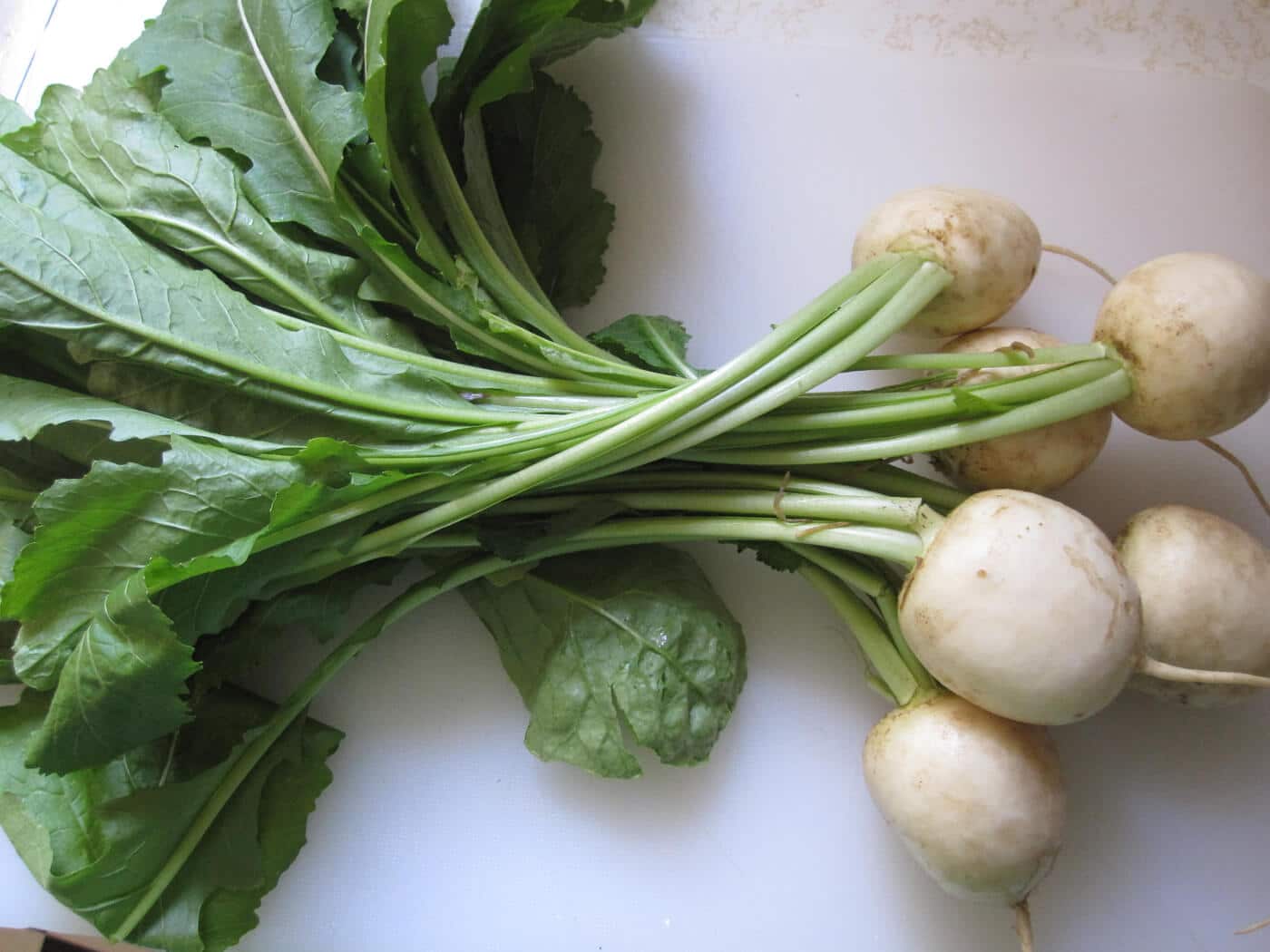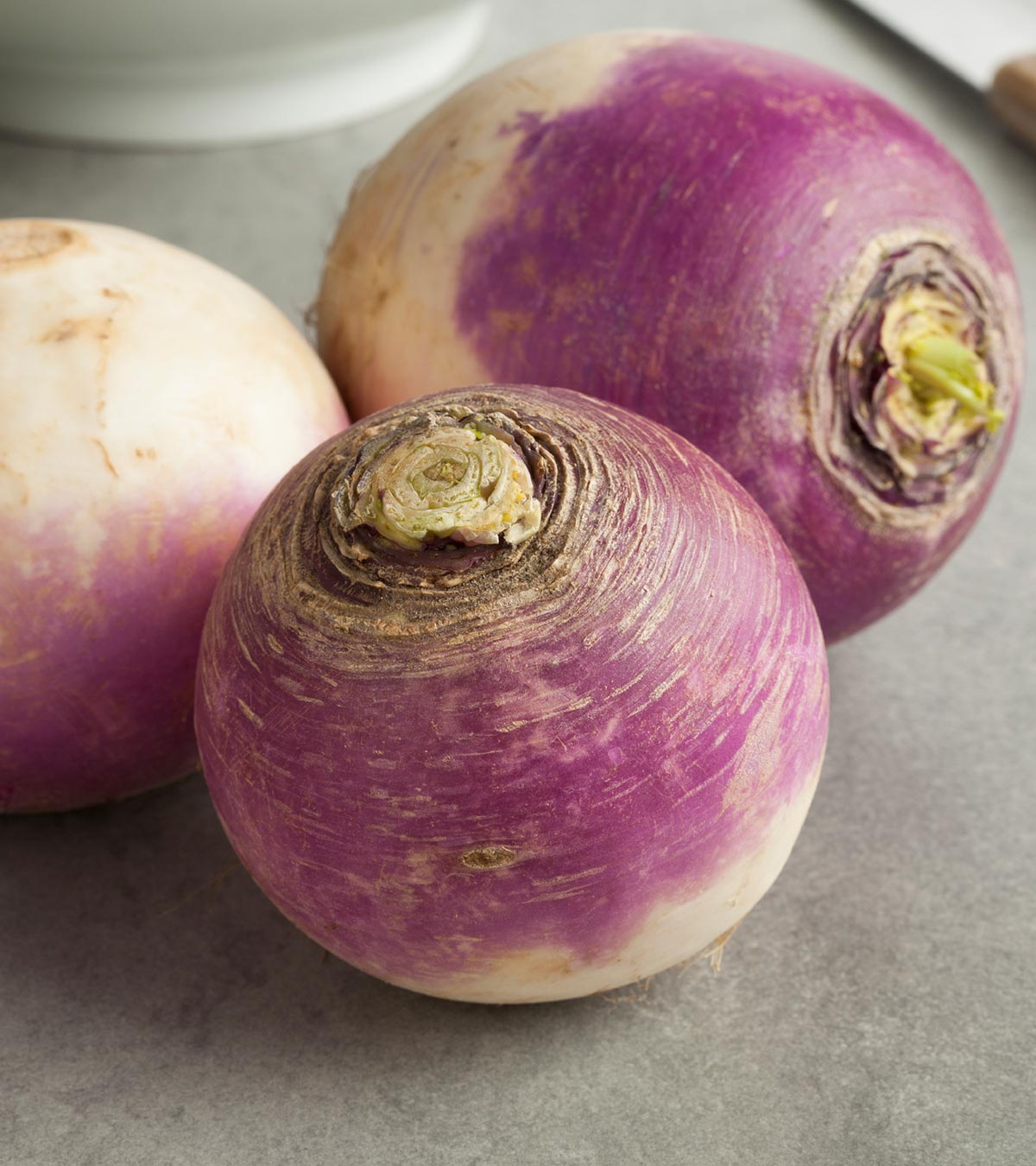

Brassica rapa var. rapa L.
|
It is commonly known as Salgam and belongs to the family Brassicaceae. It is consumed as a green leafy vegetable. It is a good source of glucosinolates, flavonoids, phenolic acids and carotenoids such as Goitrin, Gluconapin, Phenethyl isothiocyanate, Ferulic acid, Caffeic acid pentoside, Synapoylmalic acid, Isorhamnetin-O-dihexoside, Kaempherol-3-O-sinapoylsophoroside-7-O-glucoside, β-carotene and Lutein. Derivatives of it shows anti-proliferative and anti-oxidant activity by inducing cell cycle arrest at G2M phase which inhibits proliferation of cancerous cells and also inhibits the activation of JAK-STAT3 activity in cancer cells by activating IL6 which blocks the production of ROS. Mode of Consumption : Fried or boiled |
| Plant Details | Agro-climatic Zone | Vernacular Names | Pictures |
| Scientific Name: Brassica rapa var. rapa L. Family: Brassicaceae Burnett Class: Magnoliopsida Order: Brassicales Genus: Brassica L. Fruiting Season: August-February Parts: Leaves and stem |
|
Andhra Pradesh : Tarnip Bihar : Salgam, Shalgam saag Himachal Pradesh : Salgam, Shalgam saag Karnataka : Navilukosu Kerala : Tenip, Tenip paccilakal Tamil Nadu : Tarnip, Tarnip kirai Uttar Pradesh : Salgam, Shalgam saag West Bengal : Salgama, Salgama saak |
 Leaf  Root |
| Compound/Extract | Activity | Mode of Action | Marker/References |
| Phenethyl isothiocyanate (PEITC) isolated from turnip greens | Antiproliferative | Phenethyl isothiocyanate (PEITC) isolated from turnip greens inhibits the proliferation of DU145 cell and induces cell cycle arrest at G2M phase. | Cell cycle arrest[7] |
| Phenethyl isothiocyanate (PEITC) present in turnip | Anticancer | Phenethyl isothiocyanate (PEITC) present in turnip inhibits the proliferation of DU145 cell and induces cell cycle arrest at G2M phase, activates JAK-STAT3 activity in cancer cells by blocking the production of ROS by activating IL-6. | JAK-STAT3, IL-6, and ROS[7] |
| Phenethyl isothiocyanate (PEITC) isolated from turnip greens | Antioxidant | Phenethyl isothiocyanate (PEITC) isolated from turnip greens inhibits the activation of JAK-STAT3 activity in cancer cells by blocking the production of ROS by activating IL6. | JAK-STAT3, ROS, and IL6[8] |
| Arvelexin | Anti-inflammatory | Cells incubated with Arvelexin isolated from turnip down-regulates pro-inflammatory compounds such as iNOS, COX-2, IL-6, IL-1β gene expressions which prevents the activation of NF-kB. | iNOS, COX-2, IL-6, IL-1β gene, and NF-kB[10] |
| Turnip polysaccharide extracts | Immunomodulatory | Turnip polysaccharide extracts increase Nitric oxide (NO), TNF-α, upregulation of mRNA of inducible NO synthase and TNF-α and activation of Akt/NF-kB. | NO, TNF-α, iNOS, and Akt/NF-kB[11] |
| Major Class | Metabolites (Content of bioactives: mg/100g Fresh Weight) |
| Carotenoid | β-Carotene: 4.58[5] |
| Flavanoid | Isorhamnetin-O-dihexoside: 37.99mg/100g FW (Leaf)[5] |
| Flavonoid | Kaempferol 3-O-sophoroside-7-O-glucoside: 148mg/100g FW (Root)[1] |
| Glucosinolate | Gluconapin: 0.65-0.87 mg/100g FW (Leaf), Gluconasturttin : 23.6-35.9mg/100g FW (Root), Goitrin: 2.31-3.12mg/100g FW (Leaf)[6] |
| Phenolic acid | 3-p-Coumaroylquinic acid: 10.8mg/100g FW (Root), Caffeic acid pentoside: 6.3mg/100g FW (Leaf), Ferulic acid: 8.5 mg/100g FW (Root); 6.5mg/100g FW (Leaf), Synapoylmalic acid: 37.99mg/100g FW (Leaf)[5] |
| Effect | Observation | DOI |
| Human clinical studies | Increased proportion of Prevotella, Lachnospira and Ruminococcaceae family in the gut | DOI: 10.3390/nu13061847 |
| Animal model studies | Increase in Aecalibacterium prausnitzii numbers and butyrate concentration in the colon | DOI: 10.1264/jsme2.ME17059 |
| Disease | Formulation | Reference | Author | TKDL |
| Liver disease(yak¨tavik¢ra),Diseases of spleen(pl¤h¢vik¢ra),Abdominal lump(gulma),Ama(¢ma),Abscess (vidradhi),Enlarged prostate(a¾°h¤l¢),Colic (º¦la),Acute diarrhoea(atis¢ra),Pleurodynia and intercostal neuralgia(p¢rºvaº¦la),Angina pectoris(h¨tº¦la),Colic (º¦la),Constipation(vibandha),Tympanitis / Flatulence(Adhmana),Diseases of abdomen(udararoga), | Jambaradrava | Aryabhishaka (Hindustana Cha Vaidyaraja) | Shankaradajishastripade, Published by Ramesh Vitthal Raghuvanshi, Published by Shri Gajanana Book Dipot, Bhavanishankara road, Dadara, Mumbai on 15th August 1973 | Ayurveda |
| Diseases of abdomen(udararoga),Diseases of spleen(plhavikara),Piles / Ano rectal mass / Haemorrhoids,Abdominal lump(gulma),Colic ,Congestive cardiac failure,Tuberculosis / Pthysis,Urinary disorders / Polyuria(Prameha / meha),Anaemia / Hyperbilirubinaemia ,Perineal fistulas / Fistula-in-ano(Bhagandara),Worm infestation,Sprue / Malabsorption Syndrome ,Infertility(vandhyatva),Obstructive enteropathies(udavarta),Dysuria,Spasmodic stricture of urinay tract,Epilepsy(apasmara) | Mahakara (2) | Vangasena | Vangasena, Commentary by Shaligram Vaishya, Edited by Shankar lalji Jain, Published by Khemraj Shrikrishna Das Prakashan, Bombay, Edn. 1996 | Ayurveda |
| Seborrhoea,Pityriasis capitis / Furunculosis or boils in scalp(Arumsika),Eczema (pama),Dry & weeping eczema(vicarcika),Capillary angiomata, naevi(nyaccha),Ulcer / Wound Healing(vraa) | Masotailam | Bharata Bhaishajya Ratnakara - Vol. - IV | Compiled by Naginadasa Chaganalala Shah ,Translated by Gopinath Gupta, B. Jain Publishers, New Delhi, Edn. 2nd. Reprint, August 1999 | Ayurveda |
| Information from Wealth of India | Reference |
| 4.2, 04.2.1, 04.2.1.1, 04.2.1.3, 04.2.2.3, 04.2.2.5, 04.2.2.6, 04.2.2.8 |
| CSIR-North East Institute of Science and Technology, Jorhat-6, Assam, India
CSIR-Institute of Himalayan Bioresource Technology, Palampur-61,Himachal Pradesh, India |